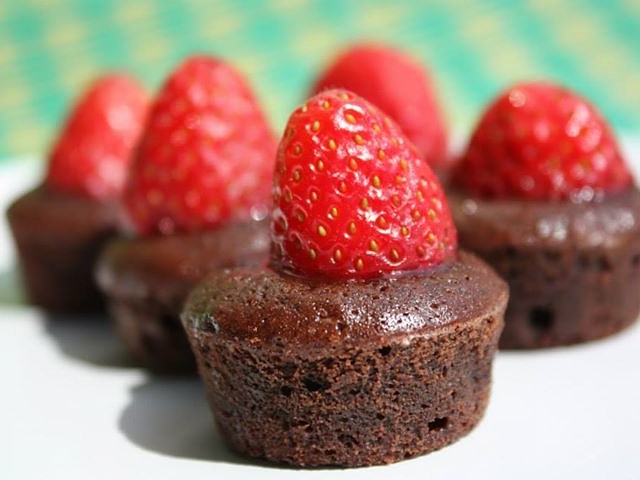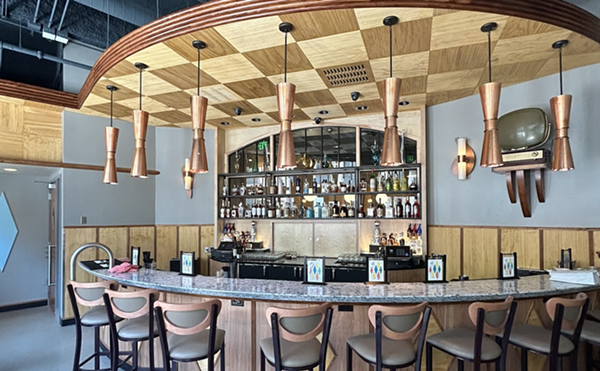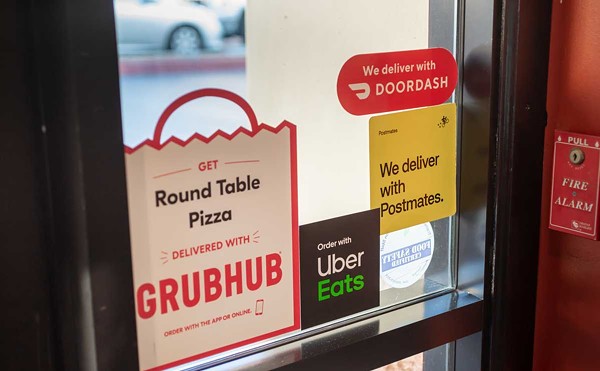Mexico's greatest living painter, Francisco Toledo, is seeking a million signatures against genetically modified corn. He is lending his prestige to the movement "because to contaminate our maize is to injure the heart of Mexico." If former Detroiters Frida Kahlo and Diego Rivera were in Mexico today, it would be easy to imagine them getting involved in this movement against the power of transnational capital.
First of all, because the legendary couple, in and out of the Communist Party, were always involved in radical causes, from land reform to supporting the Spanish Revolution. But also because food in abundance was central to the way they lived, and the traditional Mexican dishes they ate and celebrated with were based on centuries of cultivation of corn.
Kahlo and Rivera, at the center of Mexico City's circle of artists, intellectuals, and leftists, were always entertaining guests and always treating them to big meals that displayed up to a dozen dishes.
In solidarity with the poor, at their wedding feast Diego decreed that all was to be eaten with tortillas rather than knife and fork.
The Kahlo-Rivera attitude toward food was thoroughly tied up with their attitude toward Mexicanismo, their belief in exalting and promoting everything indigenous to their country, from art to clothing to cooking styles. (Frida's trademark flowing skirts and elaborate headdress were by no means typical of a woman of her class; she adopted the style of Zapotec women from Tehuantepec, Oaxaca, both as a political-cultural statement and to hide her damaged leg.)
Frida's kitchen in the house where she and Diego lived, the Casa Azul, was decorated in a traditional country style, with yellow-and-blue-tiled walls. She never ordered a modern stove, preferring that her cook use wood.
Food was presented in a style befitting an artist. A friend said, "Every day Frida made the table into a still life for Diego," with dishes and fruit arranged with a half-dozen bouquets from the market. The household pets were also invited to the table, making the still life a bit less still: a parrot might go picking among the dishes, a monkey might twine itself across Frida's shoulders, the skinny, bald Mexican escuincle dogs were underfoot. One parrot had the habit of squawking, "No me pasa la cruda" ("I can't get over this hangover").
A god and a sweet thing
Frida and Diego were married in 1929, when she was 22 and he 42, and she learned to cook from her immediate predecessor as Diego's wife, Lupe Marin. (Rivera married four times.) After the divorce, Lupe and their two daughters lived on the third floor of an apartment house she owned; Frida and Diego had the ground floor.
But Frida learned to make the meals Diego liked despite the psychological weirdness of the arrangement. Frida also owned her mother's cookbook, The New Mexican Cook, published in 1888.
Lupe taught Frida to take Rivera's midday meal to him in a covered basket while he was off painting murals, as campesina women would take meals to their husbands in the fields. In those early golden days of their marriage, Frida decorated the baskets with flowers and napkins embroidered, "I adore you." "She treated him like a god," remembered one friend. "He treated her like a sweet thing."
Frida's and Diego's division of labor in the kitchen was, of course, the traditional one. Although Frida could cook when she chose to, she was not, for the most part, slaving over a hot stove; the two saw no contradiction between their communism and their servants. She oversaw the ordering and cooking of the food; he ate it, and weighed more than 300 pounds.
Later, in the 1940s, the couple moved to the Casa Azul, which was Frida's childhood home. Her biographer Hayden Herrera describes a typical eating day: Breakfast would be leisurely, with Frida or an assistant reading the newspaper aloud to Diego, who did not want to tax his eyes. Afterward, Frida would either paint or go to the market, and Diego would go off to work. If he'd been drawing in the marketplace — where he often went to observe the poor who were his most important subjects — he would come home for comida, the main meal of the day, perhaps bringing an ingredient for the cook to incorporate.
If Diego stayed at his studio through lunchtime, Frida would send or take over a blue pewter dinner pail divided into compartments, each holding a different dish and topped with warm tortillas and bread and with cut fruit and flowers artistically arranged.
In the afternoon, Frida might paint or go to the movies or to a boxing match. In the evenings the two would share a late supper of hot chocolate and pan dulce — the sweet breads sold in a dizzying variety of shapes. (Visit Detroit's La Gloria Bakery or Mexicantown Bakery for some samples.)






